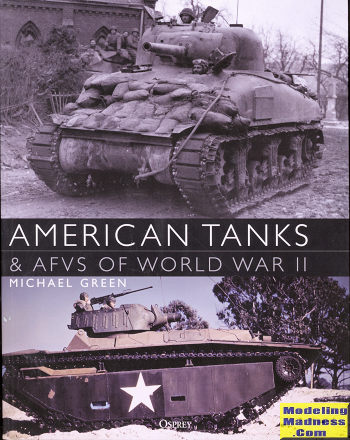 When
one thinks of American armored vehicles in WWII, the Sherman comes to mind. Well
it should as it was the most produced tank in the arsenal and was widely used by
Allies. In fact, its first combat came in the hands of the British during their
campaign in North Africa. There it showed that it was a very capable weapon
against what the German army was fielding and it was considerably more reliable
than current British armor.
When
one thinks of American armored vehicles in WWII, the Sherman comes to mind. Well
it should as it was the most produced tank in the arsenal and was widely used by
Allies. In fact, its first combat came in the hands of the British during their
campaign in North Africa. There it showed that it was a very capable weapon
against what the German army was fielding and it was considerably more reliable
than current British armor.
But there is more to American armor than the Sherman.
There were tanks that came before it, those that came after it as well as an
array of self propelled guns, armored cars, and even amphibious armored
vehicles.
The book is well researched and well thought out in
terms of how it presents its material. With 376 pages, it is not a book that can
be quickly read. It took me quite a while to go through it and I can say that I
learned quite a few new things during the reading process. I also noted that it
dispelled a few myths along the way.
There is a basic history of each type of vehicle leading
up to the main subject so you get an idea of what came before. It starts off
with early medium tanks and for the most part, that means the M3 Lee/Grant. The
Sherman gets a section all for itself as well it should as the vehicle was built
in a number of variants. We then go into light tanks. While these quickly proved
to be no match for enemy armor, they were quite useful in other venues such as
recon and infantry support. Especially in the Pacific where there was no real
opposition. It then moves on to heavy tanks. This is an area that the US did not
do a lot of development until late in the war. These tanks, primarily the M26,
did see considerable action in Korea.
The book then moves on to tank destroyers. In hindsight,
it can be seen that building the various vehicles that fit into this class was a
waste of resources and that it would have been better to built actual tanks in
their place. But even these proved to be useful from time to time. Armored cars
are next and once again, these were useful as recon vehicles and light infantry
support. Armored half tracks are covered and once again, these performed many of
the functions of the armored car and were also good as prime movers for light
and medium weapons. Many tank chassis were developed into SPGs or self propelled
guns and again, they proved to be very useful, especially during fast movement
as they could quickly be readied for action.
Finally, one subject few of us think about and those are
the LVTs or the Landing Vehicle Tracked. While the armor level on these was
quite light, they were able to hold up under small arms fire and allowed troops
to get to the beach and even beyond in some safety. Though developed for the
USMC, most of these vehicles were used by the Army.
All of this results in a very well rounded book. It is
chock full of excellent photos, most of which are period while there are some
museum examples. There are also some nice color profiles. It makes for a book
that won't be a quick read, though it will prove to be a superb reference. If
you have only one book on the subject, this is it. Highly recommended.
July 2018
Copyright ModelingMadness.com. All rights reserved.
For more on the complete line of Osprey books,
visit http://ospreypublishing.com
.
If you would like your product reviewed fairly and quickly, please
contact
me or see other details in the Note to
Contributors.
 When
one thinks of American armored vehicles in WWII, the Sherman comes to mind. Well
it should as it was the most produced tank in the arsenal and was widely used by
Allies. In fact, its first combat came in the hands of the British during their
campaign in North Africa. There it showed that it was a very capable weapon
against what the German army was fielding and it was considerably more reliable
than current British armor.
When
one thinks of American armored vehicles in WWII, the Sherman comes to mind. Well
it should as it was the most produced tank in the arsenal and was widely used by
Allies. In fact, its first combat came in the hands of the British during their
campaign in North Africa. There it showed that it was a very capable weapon
against what the German army was fielding and it was considerably more reliable
than current British armor.